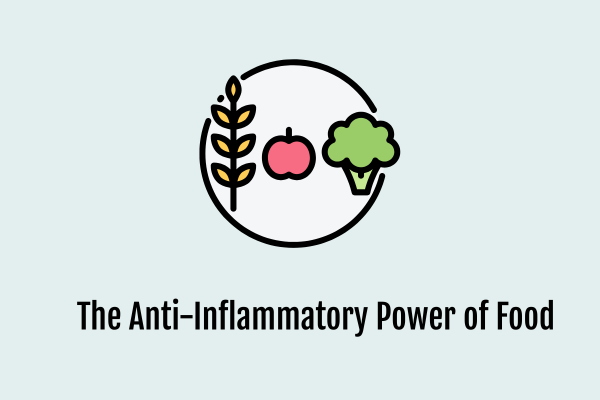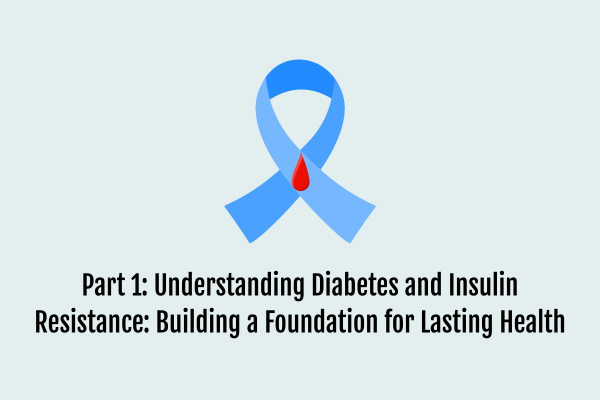The Anti-Inflammatory Power of Food
Written by: Sophia Schweiger
Reviewed by: Devon Epitropoulos (Kroesche), MS, RDN, LDN
Inflammation. You’ve heard the word tossed around in health circles, but what does it actually mean—and more importantly, how can you lower it through food?
Chronic inflammation has been linked to conditions like heart disease, diabetes, arthritis, and even some cancers. But the great news? You have more control over it than you might think.
Let’s break down how a thoughtful approach to healthy eating, meal prep, and personalized nutrition can reduce inflammation and elevate your overall well-being.
What Is Inflammation and Why Should You Care?
Inflammation is your body’s natural response to injury, infection, or harmful stimuli. Think of it like your internal fire alarm. In short bursts, it’s a good thing—it helps you heal. But when it lingers, it becomes a hidden trigger for disease.
What causes chronic inflammation?
● Highly processed foods
● Excess sugar and saturated fat
● Sedentary lifestyles
● Poor sleep and high stress
The antidote? A balanced, anti-inflammatory diet, built around nutrient-dense, whole foods.
Anti-Inflammatory Eating 101: What a Dietitian Recommends
It’s important to remember that reducing inflammation is not about cutting everything out—it’s about adding in the right stuff.
Here’s what to stock up on:
1. Colorful Fruits and Vegetables
Loaded with antioxidants, polyphenols, and fiber, fruits and veggies are inflammation-fighting powerhouses.
Since different pigments correspond to specific compounds that help lower inflammation, try to meal plan around the rainbow:
● Red: Strawberries, tomatoes, red bell peppers
● Green: Spinach, kale, broccoli
● Blue/Purple: Blueberries, eggplant
● Orange/Yellow: Carrots, sweet potatoes, turmeric
Pro tip: Incorporate at least 5 servings of fruits and vegetables daily into your meal prep.
2. Healthy Fats
Not all fats are created equal. Omega-3 fatty acids, found in foods like salmon, chia seeds, flaxseeds, and walnuts, help reduce inflammation.
Other good fats include:
● Avocados
● Olive oil
● Nuts and seeds
These fats help keep your cells functioning optimally while calming inflammation markers in the body.
3. Whole Grains
Unlike refined carbs, whole grains contain the bran and germ, meaning they’re packed with nutrients and fiber.
Top anti-inflammatory choices:
● Quinoa
● Oats
● Brown rice
● Bulgur
● Farro
Eating these regularly helps maintain balanced blood sugar levels, which is important for keeping inflammation at bay.
4. Lean Proteins
Protein is essential for tissue repair and immune function.Opt for anti-inflammatory sources like:
● Fatty fish (salmon, sardines, mackerel)
● Skinless poultry
● Legumes and beans
● Tofu and tempeh
It’s important to know that protein needs vary from person to person. For personalized advice, a registered dietitian can help determine your ideal protein needs, taking into account factors such as age, activity level, and goals.
5. Herbs and Spices
Don't underestimate the power of your spice rack! Many herbs and spices have potent anti-inflammatory properties.
Top picks:
● Turmeric – Contains curcumin, a well-studied anti-inflammatory compound
● Ginger – Known to reduce muscle soreness and inflammation
● Garlic – A natural immune booster
Try sprinkling these into soups, smoothies, or roasted vegetables during your meal prep. What Foods Trigger Inflammation?
Just as some foods fight inflammation, others can cause or positively influence it. To support your body, minimize these:
● Added sugars (in soda, sweets, and packaged snacks)
● Refined carbohydrates (white bread, pasta, pastries)
● Fried foods (often high in trans fats)
● Processed meats (bacon, sausage, deli meat)
● Alcohol
You don’t need to be perfect. Just aim to crowd out these foods by filling your plate with whole, nutrient-rich options.
The Role of Meal Planning in Lowering Inflammation
Let’s talk strategy. Making anti-inflammatory choices is a lot easier when you’ve got a plan. Here’s how meal planning helps:
● Reduces decision fatigue: You’ll already know what’s for dinner.
● Improves consistency: Healthy eating becomes your default.
● Saves time and stress: No last-minute takeout needed.
Simple steps to get started:
1. Pick a few anti-inflammatory recipes for the week.
2. Make a grocery list based on those meals.
3. Batch-cook grains, proteins, and roasted veggies ahead of time.
Personalized Nutrition: Why One Size Doesn’t Fit All
Everyone’s body is different. That’s where personalized nutrition comes in. What works for one person might not work for another. For example:
● Someone with arthritis might benefit from more omega-3s.
● A person managing diabetes may need to focus on low-glycemic carbs.
● An athlete may require higher protein to recover from training.
Tailored guidance can make your anti-inflammatory diet sustainable and effective.
Sample Anti-Inflammatory Meal Plan
Here’s a sample day to inspire your anti-inflammatory meal planning:
Breakfast:
Overnight oats with chia seeds, blueberries, walnuts, and a dash of cinnamon
Snack:
Carrot sticks and hummus with a sprinkle of turmeric
Lunch:
Grilled salmon salad with mixed greens, cherry tomatoes, quinoa, avocado, and olive oil vinaigrette
Snack:
Greek yogurt with fresh berries and pumpkin seeds
Dinner:
Lentil and vegetable stir-fry with brown rice and sautéed garlic + ginger
Dessert (optional):
A square of dark chocolate and a chamomile tea
Lifestyle Tips to Boost Your Anti-Inflammatory Diet
Food is a huge part of the puzzle—but it's not the only piece. These lifestyle habits complement an anti-inflammatory diet:
● Move regularly: Aim for at least 30 minutes of activity each day
● Get enough sleep: Shoot for 7–9 hours per night
● Manage stress: Try meditation, journaling, or breathing exercises
● Stay hydrated: Water supports every system in your body
And remember: small, consistent changes = big, long-term results.
Work With a Dietitian for Lasting Change
If you're overwhelmed by conflicting advice online, you're not alone. Working with a registered dietitian provides clarity and support tailored to you.
Whether you're managing a health condition or just want to feel your best, healthy eating doesn't have to be confusing. A registered dietitian can simplify the science and create a realistic plan you’ll actually stick with.
Interested in learning more? Reach out to scheduling@casespecificnutrition.com to connect with a Case Specific Dietitian and start your anti-inflammatory journey today. Our team provides individualized nutrition care across the Greater Pittsburgh area, as well as in Erie, Raleigh, and Tampa.
Disclaimer: The information provided in this blog is for educational purposes only and is not intended to diagnose, treat, cure, or prevent any medical condition. This content is not medical advice and should not be used as a substitute for professional medical care. If you have any health concerns or medical conditions, please consult with a qualified healthcare provider before making any changes to your diet or lifestyle.


.png)
.png)

.webp)

